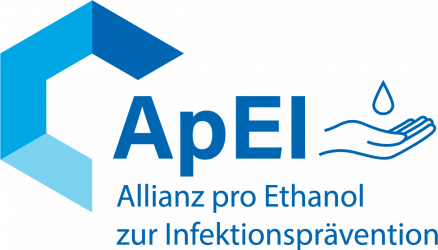Frequently asked questions are answered in the following.
What are the legal grounds of the ethanol process?
The use of ethanol in disinfectants is based on its authorization as a biocide. The biocide authorization is regulated at the EU level under the Regulation (EU) No. 528/2012. Additionally, the Review Regulation (EU) No. 1062/2014 applies. As an active substance according to CLP Regulation (EC) No 1272/2008, ethanol is currently classified. It requires for all new and old substances a harmonized classification. In case of carcinogenic, mutagenic, and reprotoxic substances, a CMR classification and labelling is required. The re-classification of ethanol is set to begin with the submission of a CLH classification proposal.
What is the current status of the ethanol process?
Currently, the responsible EU Member State Greece is developing a proposal for the harmonized classification and labelling of ethanol. In July 2020, a classification as a reprotoxic category 2 (CMR Cat. 2) was suggested. The Greek authorities were to submit the proposal by December 2020. However, no submission has been made yet and the submission status on the ECHA website currently says “Delayed until further notice due to ongoing studied. Expected date of submission to be confirmed” (Status: September 2021).
After an official submission is made by the Greek authorities, a public consultation will start wherein all stakeholders can submit their comments within 60 days.
What are the implications of classifying ethanol as CMR category 2?
A CMR classification of ethanol will have far-reaching consequences. If a substance is classified as a CMR category 1A, 1B, or category 2, it may no longer be used in national healthcare systems. In Germany, for instance, this is due to the different occupational health and safety regulations. In particular, the Maternity Protection Act (Mutterschutzgesetz, MuSchG) has an immense impact on the use of ethanol in everyday practice. For hospitals and other healthcare facilities, a category 2 classification would mean that disinfectants with ethanol could no longer be used during pregnancy.
Although a CMR category 2 classification has been suggested by the Greek authorities, a higher classification could be proposed in the ongoing process. A possible classification under categories 1A and 1B would have further consequences for the use of ethanol.
What are the implications of classifying ethanol as CMR category 1A or 1B?
CMR substances in categories 1A and 1B are subject to substitution in some member states such as Germany. Technical rules may also apply that considerably restrict further use. In addition, according to the REACH Regulation (Registration, Evaluation, Authorization, and Restriction of Chemicals), CMR substances in categories 1A and 1B must be substituted long-term. Consequently, the classification of ethanol as CMR substance in categories 1A and 1B would further restrict and terminate its use, with significant consequences for infection prevention.
Which actors play a central role in the ethanol process?
At the EU level, the European Chemical Agency (ECHA) is primarily responsible for the process under the EU Regulations. Within the ECHA, the Risk Assessment Committee (RAC) and the Biocidal Products Committee (BPC) are responsible for the assessment, classification, and approval of biocides. At the national level, institutions of the member states also accompany the process. In Germany, the Federal Ministry of the Environment, Nature Conservation and Nuclear Safety (BMU), the Federal Ministry of Health (BMG) and the Federal Ministry of Labour Social Affairs (BMAS) are involved. The final decision on the classification and authorization of ethanol is made by the European Commission in consultation with the member states.
What is the relevance of ethanol in infection prevention?
Alcohol-based disinfectants play an important role in infection prevention. They act quickly and comprehensively against most pathogens and are widely accepted by the general public.
Ethanol in particular shows better efficacy on viruses compared to other alcohol-based disinfectants. It is justifiably the most widely used active substance in disinfection due to its broad efficacy, safe application and high availability, making it an indispensable component of infection prevention. In addition, the WHO has listed ethanol as an indispensable component that contributes to basic care.
Are there alternatives to ethanol?
Next to ethanol, other alcohol-based disinfectants are also in use including isopropanol and n-propanol, which are used to combat enveloped viruses. Yet, ethanol is more effective than isopropanol and n-propanol in combating non-enveloped viruses.
What is the evidence for the CMR properties of ethanol?
It is undisputed that ethanol is harmful to individuals when orally consumed in large quantities. In this regard, many studies have been conducted to investigate the negative effects of alcohol consumption. However, there is no scientific evidence that ethanol leads to relevant adverse health effects when applied on the skin and surfaces (dermal and inhalation). On the contrary, toxicological risk assessments in professional, industrial and consumer settings indicate that dermal and inhalation exposure to ethanol-containing chemicals is safe.
This is confirmed by Germany’s Permanent Senate Commission for the Investigation of Health Hazards of Chemical Compounds in the Work Area (MAK). The MAK Commission classifies ethanol as a carcinogenic and mutagenic substance in category 5. This implies that no significant risk is associated with the use of ethanol.
